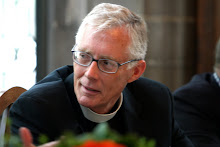Thinking About Our Future Selves
In last Saturday’s New York Times, reporter Alina Tugend wrote a fascinating piece about how some people see a disconnection between their present and future selves. [“Bad Habits? My Future Self Will Deal With That”, New York Times, February 25, 2012] As she says,
Now, I know this sounds kind of weird, but I’ve found some research showing that many of us don’t have the incentive to eat healthy or save money or add to our retirement accounts because we think of ourselves in the future as someone different altogether. In fact, a future self can seem to be this annoying other person who wants to prevent you from having fun in the present.
An inability to conceive of our future selves as continuous with our present selves explains why some people don’t exercise, eat healthily, or pursue higher education. As Tugend notes, “Those who have almost no ability to think of themselves in the future are much less likely to floss, say, or save for retirement . . . Those who have much more ‘future self continuity’ are much more likely to have more assets and own their own home.”
Why does this matter? It matters because “our connection to our future selves can have an impact on lots of important decisions we make right now about our lives.”
As I read this article, I thought of course about my own health, career, and financial choices made over time. I thought even more about the future of the church. Several people of late have asked why we’re introducing some modest changes to our liturgical life—printing out the entire liturgy at the Sunday 10 a.m. service, offering daily Morning Prayer Monday through Thursday at 8:30 a.m. in St. Paul’s Chapel, starting Lex Orandi, a Sunday night emergent church liturgy aimed at people under 40. Some have also questioned the need to move our outreach ministry away from grant making and toward hands-on collaboration with FocusHope and Glazer Elementary School in Detroit. The answer to all these questions is that I am trying to think not only about our present but also about our future church.
Congregational Development theorists call this strategy “parallel development”. What that means is that you plan for the future by trying to nourish both the present congregation and to build the structures for the future. Parallel development has long been used in changing neighborhoods, say where a dwindling Anglo congregation shares a building with a growing Latino community. The idea is to keep both things going so that the church of the present can be sustained and the church of the future can be prepared for.
There’s no nice way to say this, but research tells us that all of us are living in a changing neighborhood. Most people under 50 care very little about the things that those of us over 50 value in church—prayer books, traditional hymns, worship guilds, typical church activities like rummage sales and thrift shops to name a few. What younger people value more than the “Sunday morning experience” or “our warm Christian family” is spiritually serious worship and ministry. They’re not interested in putting on a taffy pull. They are interested in praying to, talking about, and serving God. When asked, seekers who do not go to church explain their lack of attendance this way: they see traditional churches as places obsessed with their own internal conflicts. They don’t see the churches as places where they can learn about God.
For me, as the leader of a faith community making the transition to serving future generations, the twofold task concerns nourishing the present congregation and planning for the next one. I’m 62 years old. I remember the old Prayer Book. I prefer traditional hymns to praise music. But I know that to lead a large, dynamic church I cannot serve my tastes alone. Given the demographic changes abroad in America right now—the Baby Boomers (my own generation) are the last majority white generation—it is clear that parishes like Christ Church Cranbrook will soon face a stark choice. If we want to remain a dynamic faith community, we will need to appeal to a more ethnically and racially diverse population. If we want to offer only a “traditionally” English church experience, we will need to readjust our attendance expectations radically downward.
In my work, prayer, and intellectual life, I have always rejected false choices. I don’t think we have to choose between present tastes and future needs. But I do think we will need to become the kind of faith community that values diversity and revels in multiplicity. By the time of the 2040 Census, there will be no one majority race or ethnicity in America. Our country and our Oakland County neighborhoods will be exciting mixtures of races, cultures, and religious tastes. If Christ Church Cranbrook can live into and embrace this future, our ministries in the 21st century will thrive. If we can’t, we will lose both numbers and relevance.
I do not believe we need to make that false choice. We can celebrate our present church self and build for the next one by seeing both as logical extensions of our deepest values. Anglicanism has never been about being English. It’s always been about the principle that we discover God in our common life. As the reformers said, Praying shapes believing.” “The law of prayer is the law of faith.” Lex orandi, lex credendi. That’s what “Lex Orandi” means.
Gary Hall

